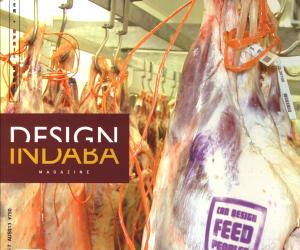First Published in
Graphic designers, unlike advertising creatives, on the whole don't spend much time fixating on what turns people on. They are, by nature and occupation, more likely to focus on the formal properties of constructing a message (and what turns them on...) - with the actual content and its tone being advised by the client. Designers are on the whole more introverted, with the extroverts quickly moving away from the actual designing and into the account relationships and other areas. This is, of course, a gross generalisation, but one arrived at from years of observation.
Even in the high world of brand consultancy, where ‘tone’ and ‘spirit’ and ‘values’ and all those kinds of things are terribly important and worth charging a lot of money for, the designer does not brainstorm ‘emotional’ responses but rationally and intuitively looks for ways of putting across the emotion that is advised.
This difference was reinforced for me in just the last few days when I was required to sit in on a pitch between a design studio and an ad agency for a mixed media campaign. One produced beautiful but somewhat sterile work that lacked a real hook, while the other had virtually no insight into the real value of how things looked, but could cut through viewer indifference with some pretty sharp, witty and touching words. Need I explain which presentation came from which team? The net result was that I have no confidence in either team’s ability to create and execute a convincing campaign that is rooted in a powerful emotional connection with the target audience. We have still not decided between them - we want the best of both, but these minds and approaches do not easily join.
This ongoing experience played itself across the images I was considering as the basis for an article. Some of them are the photographs you see here. They are deliberately crude images that have an emotional resonance quite outside of any technical ‘quality’ in the image crafting. At least, they have an emotional resonance for me.
To bring across how they touch me, I cannot rely on the image. Even if they were crafted with much more finesse, charged with atmosphere through effects of lighting or coloration or by the configuration of elements, they would still then only be elusive, stylish photographs, illustrative and conceptual and yet indefinite in their meaning. Which, put another way, means they verge on the meaningless until they get words.
Now put this concept next to them: Loss. All the images are of objects that I found by the roadside which I presume the owners had accidentally left or dropped. I have made a habit of photographing such items for over a year now and it is remarkable what you find.
There is the constant pathos attached to the lost child's glove or toy; there is the mystery created by random objects that just seem completely out of place, functionless where you discover them and yet full of use; there is the sense of dropping into somebody else's life or of a small part of their life dropping out into yours. A tear in the fabric of experience.
In a strange kind of way, the objects can take on the property of a ‘momento mori,’ signalling constancy and change together (the object remains, the person goes).
The simple device of contextualising or de-familiarising an image by putting a word or words next to it to explain or explore the meaning of the picture is so basic and so prevalent in great communication and great graphic design... but so rarely taught in design.
This tragic omission in the design education structure allows advertising agencies to always tend to have the upper hand over designers in a clients’ communications solutions.
Now that designers are increasingly no longer hired for their basic technical abilities, but are expected to be problem solvers and ‘ideas people,’ the essential value of words with visual language cannot be shied away from. In general, designers need to care a lot more about the power of the words they handle and their responsibility to help those words get there. The only way of getting emotional connection is with the two elements of image and language - or with language alone. Even the most searing image is little more than wallpaper without a caption, while a novel can work just fine on its own. (Notice how ‘Untitled’ is rarely a caption on a wall that goes with the works that connect most immediately and emotionally.)
If you disagree, you might want to write in and show us the image or visual construction that works at a powerful emotional level without a verbal language context.
By the way, I was going to show you one other image, one of my favourite of the images of ‘lost’ items that I have photographed. It was taken at Snoqualmie Falls near Seattle (famous for appearing in the American cult TV series, Twin Peaks). I looked down from the viewing balcony, through the spray mist of the falls, and saw that somebody had dropped a crutch onto the wet rocks below. It had clearly been there some time. I have mused on how it got there; I can only imagine the owner was waving it in the air as they pointed at the impressive scene and then it slipped free.
But I can't show you the picture as it is... lost, with the rest of that sheet of transparencies. Maybe somebody else has it now, and for them it will can take on a whole new meaning thanks to the absence of language, the absence of words that shape what we see, think and feel.














